Resin of Commiphora trees
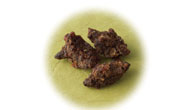
Arab region, Africa
One of the oldest incense materials
Used in ancient Egypt for embalming mummies
Effective as a sedative and as an anodyne
incense (to be heated),preservatives etc.
Resin of boswellia carteri
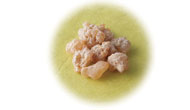
Arab region, Ethiopia, India etc.
One of the oldest incense materials
Still in use mainly at churches
incense (to be heated),incense sticks etc.
Resin of xunluxiang.
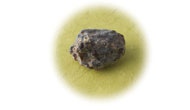
India, Iran, Indonesia, etc.
Semi-fossil resin produced under the ground
Stored in Shosoin
Although it used to be an important incense material as one of the five-incense, it is no longer used frequently.
Kneaded incense etc.
Resin of borneol tree
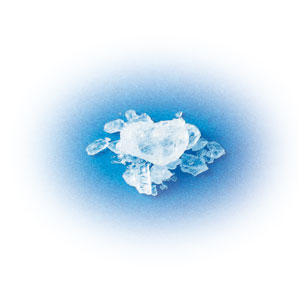
Indonesia
Crystallized white scale resin
Smells cool and fresh
Widely used in granulated incense, incense sticks etc.
Effective as a repellent and as a preservative
insect repellent sachets, scented sachets, granulated incense, incense sticks etc.
Resin of Benzoin tree that belongs to Styracaceae
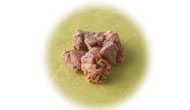
Thailand, Indonesia etc.
Used for keeping fragrance of incense and for cosmetics
It smells sweet and is effective for respiratory problems
Generally used in a ground form
Kneaded incense, incense sticks, granulated incense etc.
Bark of an evergreen that belongs to Lauraceae
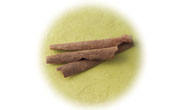
Sri Lanka, China, Vietnam
Used widely in various incense products
Used as a herbal medicine to treat stomach problems
Incense, food flavor, medicine
Bud of an evergreen that belongs to Myrtaceae.
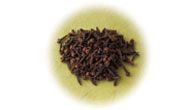
Molucca Islands, Indonesia, East Africa
Called "丁字(Choji)" in Japanese as the bud looks like the character "丁" ("字" means "character".)
One of the popular spices used in cooking along with pepper
Effective as a preservative and for stomach problems
Food flavor, medicine, incense sachets, incense sticks, granulated incense etc.
Rhizome of a perennial plant Turmeric of the ginger family, Zingiberaceae.
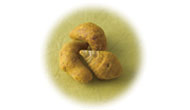
India, South Asia
Used to be an important incense material as one of the five-incense in the Heian Period
Used as incense, dye and medicine
Famous as an ingredient of curry powder
Effective as a herbal medicine for stomach problems
Dye, medicine, food coloring etc.
Root and stalk of a plant that belongs to Caprifoliaceae
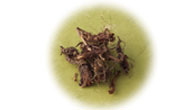
China, India etc.
The root is suitable for incense. The stalk is used as a herbal medicine for calming pain or treating stomach problems.
Although its own smell is not a good one, when it is mixed with other incense it smells robust. Therefore it is used for mixed incense frequently.
Incense sachets, incense sticks, granulated incense etc.
Root and stalk of a perennial that belongs to Zingiberaceae
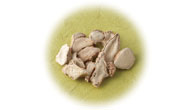
South of China
Used in dried slices
Effective as a repellent and used for protecting clothes from insects
Incense sachets, granulated incense etc.
Root and stalk of a Chinese plant
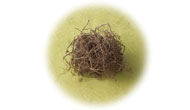
China
Smells cool and fresh
Used in a ground form for mixed incense
Incense sticks, molded incense, kneaded incense etc.
Leaf of a perennial that belongs to Lamiaceae
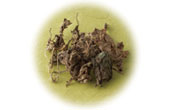
Indonesia
Used mostly as essential oil and also for mixed incense
Commonly known as Patchouli
Effective as a repellent, an antipyretic and an anodyne
Incense sachets etc.
Leaf of a plant that belongs to Primulaceae
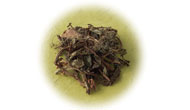
China
Smells as strong as Nader Spikenar and is used as a spice in curry powder
Food flavor, incense powder etc.
Fruit of evergreen that belongs to Schisandraceae
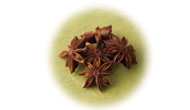
South China, North of the Indochina peninsula
Eight-point star shaped and used as a spice in Chinese food
Effective as a preservative and a herbal medicine for stomach problems
Spice, incense sticks, incense sachets, granulated incense, molded incense etc.
Operculum of spiral shell
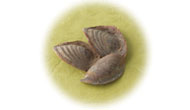
Africa
Used in a ground form for mixed incense
Plays an important role as a fragrance preservative
Kneaded incense, incense sticks etc.
Secretion of male Musk deer
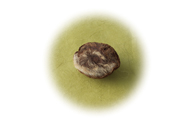
China, Nepal, Siberia
Although the smell of musk itself is hardly a good one, it changes to a great fragrance when considerably diluted. It is widely used for preserving fragrance.
As natural musk is extremely expensive, synthetic musk is used in most cases except for high quality goods
Used in Chinese medicine as a cardiac stimulant
Incense sachets, incense sticks, kneaded incense etc.
Secretion of sperm whales
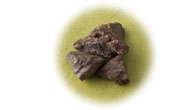
South Seas
Waxy substance produced in the digestive system of sperm whales
Used for preserving fragrance. Musk and ambergris are the two most important animal-derived incense materials.
Effective as a cardiac stimulant and an anodyne
medicine
Tusk of narwhals
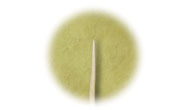
Arctic Ocean
An incisor tooth of the male narwhal developed to approx. 2m in length
Effective as an antipyretic and an antidote
medicine
Gallstone
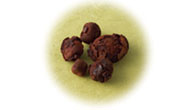
Australia etc.
Calculi formed within the gallbladder or bile duct of an ox. About 1-4cm in size in a spherical or irregular shape.
Effective as an antipyretic, a sedative or a cardiac stimulant
medicine
Copyright © 2008 Yamada-Matsu Co., Ltd.
| Site Map | Privacy Policy |